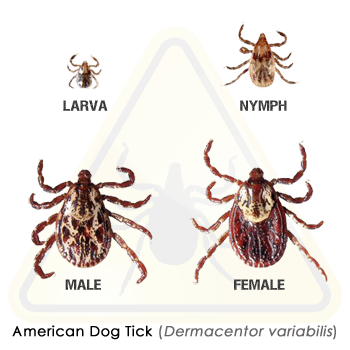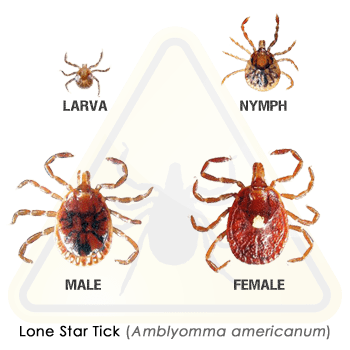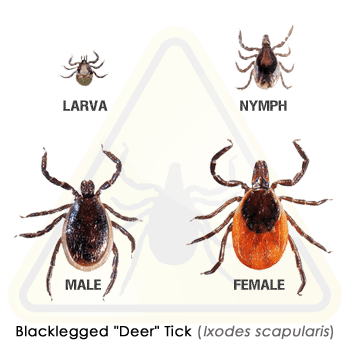How to ID a Tick
This tick ID guide is intended to aid in the identification of (unfed) ADULT ticks. Ticks shorter than 3mm (1/8 inch) are usually immature and more difficult to identify. These smaller should be sent to our experts to properly ID. An easy way to help identifying these ticks, is to TXT photos of your tick to the Tick Safety Hotline anytime at (703) 828-4343.
- Does the rear edge of the tick appear segmented with several square plates known as festoons? (See illustration to the right.)
YES: Go to 3.NO: Go to 2.
- Are the mouthparts long, narrow and visible from above the tick?
YES: This may be a Blacklegged “Deer” Tick (Ixodes scapularis). Blacklegged ticks are most common in and around heavy leaf litter in forested areas, and around the edges of fields (but not typically out in fields). They range from dark brown to bright tan/red and have black legs. These ticks can transmit Lyme and other diseases. However, because there are many similar Ixodes species, they should be sent to an expert for species identification.NO: This is not your typical tick, but rather a “soft tick” (Argasidae). These ticks are soft, while all other ticks mentioned here are “hard ticks.” Soft ticks rarely, if ever, transmit disease, and are often associated with domestic birds upon which they feed.

- Are there irregular silvery white marks in the center of the tick’s back?
YES: This is an American Dog Tick (Dermacentor variabilis), one of the most common ticks found throughout the United States and Canada. It usually feeds on dogs and other small mammals, but will bite people and occasionally transmit Rocky Mountain Spotted Fever and in extremely rare cases, Tularemia. The silvery-white marks streak across the backs of males from the edges of the scutum to the rear end. On females, the silvery-white marks are found only on the scutum. These ticks are oval shaped and their mouthparts are relatively short and broad. Adult Dog ticks are also typically much larger in size compared to the Lone Star and Deer tick.
NO: Go to 4.
- Are there white markings on the rear margin of the tick’s back OR a single white spot in the center of the back?
YES: This is a Lone Star Tick (Amblyomma americanum). These ticks are extremely common throughout the entire eastern half of the United States, and can now be found as far north as Canada. They have long, narrow mouthparts (as in the illustration above) and their bodies are somewhat round in shape rather than oval-shaped like other ticks. Lone Star ticks can transmit several illnesses including one that causes.
NO: This may be a brown dog tick (Rhipicephalus sanguineus) . The brown dog tick is oval in shape and has shorter and thicker mouthparts than some other ticks. It feeds primarily on dogs and can be found in kennels and other places where dogs live. Of the ticks mentioned here, this is the only tick that can reproduce and become problem indoors. This tick seldom bites or transmits disease to people.





